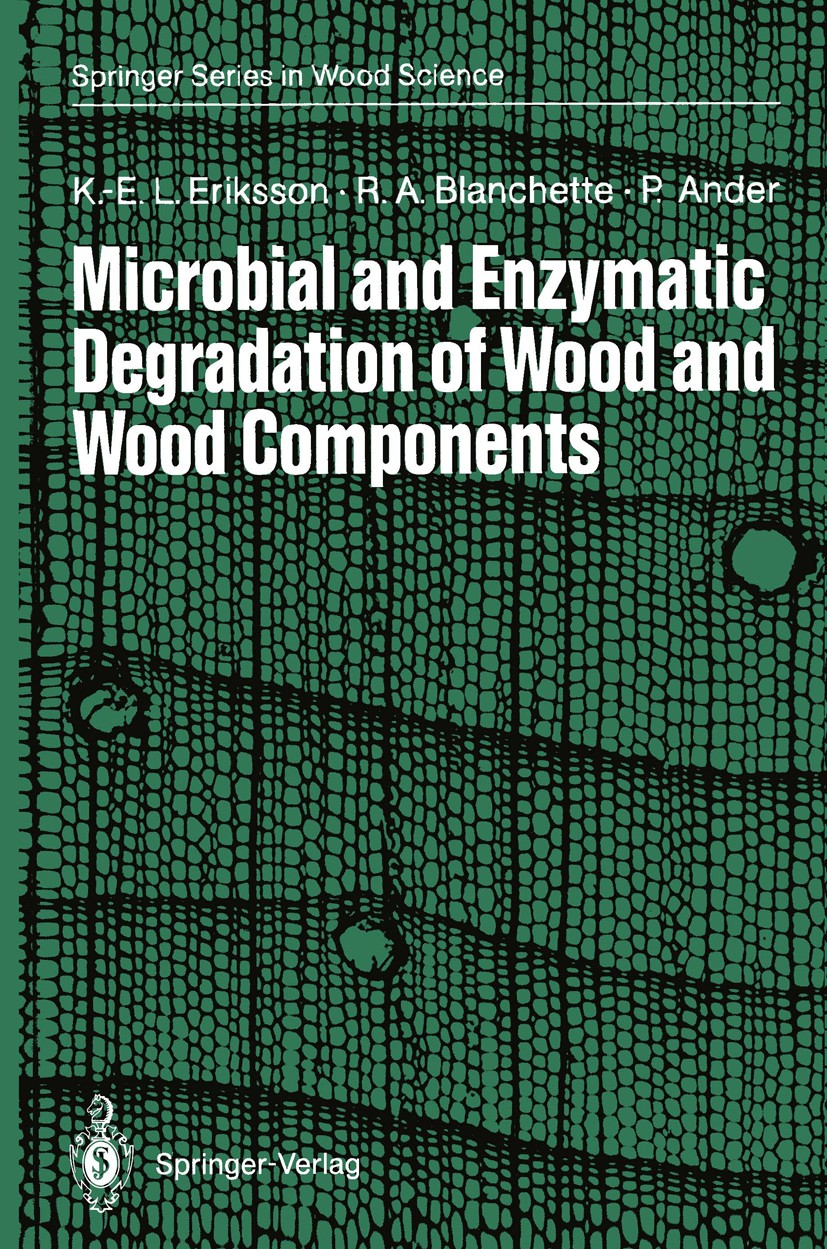| 書目名稱 | Microbial and Enzymatic Degradation of Wood and Wood Components |
| 編輯 | Karl-Erik L. Eriksson,Robert A. Blanchette,Paul An |
| 視頻video | http://file.papertrans.cn/634/633070/633070.mp4 |
| 叢書名稱 | Springer Series in Wood Science |
| 圖書封面 |  |
| 描述 | The oil crisis during the 1970s turned interest towards the utilization of renewable resources and towards lignocellulosics in particular. The 1970s were also the cradle period of biotechnology, and the years when biotechnical utilization of lignocellulosic waste from agriculture and forestry gained priori- ty. This was a logical conclusion since one of nature‘s most important biologi- cal reactions is the conversion of wood and other lignocellulosic materials to carbon dioxide, water and humic substances. However, while biotechnology in other areas like medicine and pharmacology concerned production of expen- sive products on a small scale, biotechnical utilization and conversion of ligno- cellulosics meant production of inexpensive products on a large scale. Biotechnical utilization of lignocellulosic materials is therefore a very difficult task, and the commercial utilization of this technology has not progressed as rapidly as one would have desired. One reason for this was the lack of basic knowledge of enzyme mechanisms involved in the degradation and conversion of wood, other lignocellulosics and their individual components. There are also risks associated with initiating a t |
| 出版日期 | Book 1990 |
| 關(guān)鍵詞 | Abbauenzyme; Hemicellulose; Holzabbau; bacteria; biotechnology; cellulose; degrading enzymes; enzymes; fungi |
| 版次 | 1 |
| doi | https://doi.org/10.1007/978-3-642-46687-8 |
| isbn_softcover | 978-3-642-46689-2 |
| isbn_ebook | 978-3-642-46687-8Series ISSN 1431-8563 |
| issn_series | 1431-8563 |
| copyright | Springer-Verlag Berlin Heidelberg 1990 |
 |Archiver|手機(jī)版|小黑屋|
派博傳思國際
( 京公網(wǎng)安備110108008328)
GMT+8, 2025-10-7 06:16
|Archiver|手機(jī)版|小黑屋|
派博傳思國際
( 京公網(wǎng)安備110108008328)
GMT+8, 2025-10-7 06:16


